Many people will hear the words "cool", "powerful", and "high-end" in their minds when they hear the words "robot". Cool. In fact, in this article, we will explore the basic concepts of robotics and understand how robots accomplish their tasks.
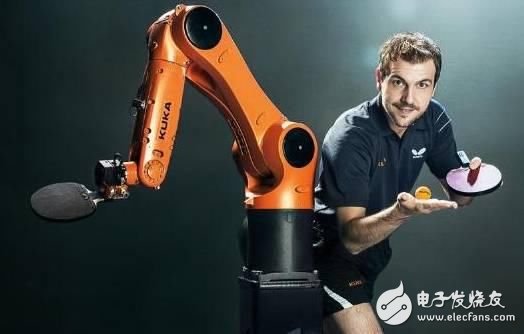
At the most basic level, the human body consists of five main components:
Of course, humans also have some intangible characteristics, such as intelligence and morality, but on a purely physical level, this list is quite complete.
The components of a robot are very similar to humans. A typical robot has a movable body structure, a device similar to a motor, a sensing system, a power supply, and a computer "brain" that controls all these elements. Essentially, robots are "animals" made by humans. They are machines that imitate human and animal behavior.
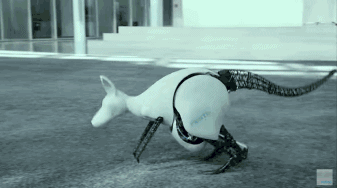
Bionic kangaroo robot
The definition of robots is very broad, ranging from industrial robots served by factories to robots cleaned at home. According to the broadest definition at present, if something is considered a robot by many people, then it is a robot. Many robot experts (people who make robots) use a more precise definition. They stipulate that the robot should have a reprogrammable brain (a computer) to move the body.
According to this definition, robots differ from other mobile machines (such as cars) in their computer elements. Many new cars have an on-board computer, but only use it for minor adjustments. The driver directly controls most parts of the vehicle through various mechanical devices. Robots are different from ordinary computers in physical characteristics. They are each connected to a body, but ordinary computers are not.
Most robots do have some common characteristics
First, almost all robots have a movable body. Some have motorized wheels, while others have a large number of movable parts, which are generally made of metal or plastic. Similar to human bones, these independent components are connected by joints.
The wheel and shaft of the robot are connected by some kind of transmission device. Some robots use motors and solenoids as transmission devices; others use hydraulic systems; others use pneumatic systems (systems driven by compressed gas). The robot can use any type of transmission described above.
Second, the robot needs an energy source to drive these transmissions. Most robots use batteries or wall outlets to provide power. In addition, hydraulic robots require a pump to pressurize the liquid, while pneumatic robots require a gas compressor or compressed gas tank.
All transmission devices are connected to a circuit by wires. The circuit directly supplies power to the electric motor and solenoid coils, and operates electronic valves to start the hydraulic system. The valve can control the flow path of the pressurized fluid in the machine. For example, if the robot wants to move a hydraulically driven leg, its controller will open a valve, which is led by a hydraulic pump to the piston cylinder on the leg. The pressurized fluid will push the piston and rotate the leg forward. In general, robots use pistons that provide two-way thrust to allow components to move in two directions.
The robot's computer can control all components connected to the circuit. In order to make the robot move, the computer will open all the necessary motors and valves. Most robots are reprogrammable. If you want to change the behavior of a robot, you only need to write a new program to its computer.
Not all robots have sensing systems. Few robots have sight, hearing, smell or taste. One of the most common feelings a robot has is a sense of movement, that is, its ability to monitor its own movement. In the standard design, grooved wheels are installed at the joints of the robot. There is a light-emitting diode on one side of the wheel, which emits a beam of light, passes through the groove, and shines on the light sensor on the other side of the wheel. When the robot moves a particular joint, the grooved wheels will turn. During this process, the groove will block the beam. The optical sensor reads the flashing pattern of the light beam and transmits the data to the computer. The computer can accurately calculate the distance the joint has rotated based on this model. The basic system used in a computer mouse is the same.
These are the basic components of the robot. Robot experts have countless ways to combine these elements to create infinitely complex robots. The robot arm is one of the most common designs.
Second, how the robot worksThe term "robot" in English comes from the Czech word robota, which is usually translated as "forced laborer". It is very appropriate to use it to describe most robots. Most of the robots in the world are used for heavy and repetitive manufacturing work. They are responsible for tasks that are very difficult, dangerous, or boring for humans.
The most common manufacturing robot is a robot arm. A typical robot arm is composed of seven metal parts, which are connected by six joints. The computer will rotate the stepping motors connected to each joint separately in order to control the robot (some large robot arms use hydraulic or pneumatic systems). Unlike ordinary motors, stepper motors will move accurately in increments. This allows the computer to accurately move the robot arm so that the robot arm repeats exactly the same movements. The robot uses motion sensors to ensure that it moves exactly the correct amount.
This industrial robot with six joints is very similar to a human arm. It has parts equivalent to shoulders, elbows and wrists. Its "shoulders" are usually mounted on a fixed base structure (not a moving body). This type of robot has six degrees of freedom, that is, it can rotate in six different directions. In contrast, human arms have seven degrees of freedom.
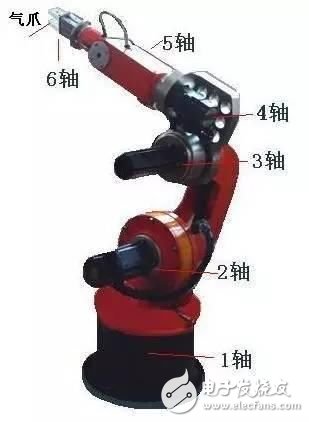
The joints of a six-axis industrial robot
The role of the human arm is to move the hand to different positions. Similarly, the role of the robotic arm is to move the end effector. You can install various end effectors suitable for specific application scenarios on the robot arm. There is a common end effector that can grasp and move different items, and it is a simplified version of the human hand. Robot hands often have built-in pressure sensors to tell the computer how hard the robot is holding a certain object. This prevents objects in the robot's hands from falling or being crushed. Other end effectors include blowtorches, drills and paint sprayers.
Industrial robots are designed to repeatedly perform the exact same work in a controlled environment. For example, a robot may be responsible for screwing the lid of a peanut butter jar transported on the assembly line. In order to teach the robot how to do this job, the programmer will use a hand-held controller to guide the robot arm to complete the whole set of actions. The robot accurately stores the sequence of actions in memory, and it will do this set of actions repeatedly whenever new jars are transferred from the assembly line.
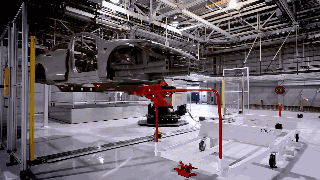
The robot arm is one of the basic components used in the manufacture of automobiles
Most industrial robots work on car assembly lines and are responsible for assembling cars. When doing a lot of this kind of work, robots are much more efficient than humans because they are very precise. No matter how many hours they have been working, they can still drill holes in the same position and tighten the screws with the same force. Manufacturing robots also play a very important role in the computer industry. Their extremely precise clever hands can assemble a tiny microchip.
Robot arms are relatively difficult to manufacture and program because they only work in a limited area. If you want to send the robot to the vast outside world, things get a little more complicated.
The first problem is to provide a feasible motion system for the robot. If the robot only needs to move on flat ground, wheels or tracks are often the best choice. If the wheels and tracks are wide enough, they are also suitable for rough terrain. But designers of robots often want to use leg-like structures because they are more adaptable. Making legged robots also helps researchers understand natural kinematics, which is a useful practice in the field of biological research.
The legs of the robot are usually moved back and forth under the drive of hydraulic or pneumatic pistons. The pistons are connected to different leg parts, just like the muscles attached to different bones. To make all these pistons work together in the right way, this is undoubtedly a problem. In the infant stage, the human brain must understand which muscles need to contract at the same time to prevent falling when walking upright. In the same way, the designer of the robot must understand the correct combination of piston movements related to walking, and compile this information into the robot's computer. Many mobile robots have a built-in balancing system (such as a set of gyroscopes) that tells the computer when it needs to correct the robot's movements.
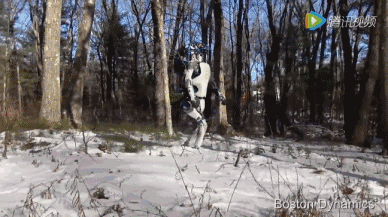
Boston Dynamics' latest upgraded Atlas humanoid robot
The movement mode of bipedal walking is inherently unstable, so it is extremely difficult to realize in the manufacture of robots. In order to design robots that walk more stably, designers often turn their eyes to the animal world, especially insects. Insects have six legs, they often have extraordinary balance ability, and can adapt to many different terrains.
Some mobile robots are controlled remotely, and humans can direct them to perform specific tasks at specific times. The remote control device can communicate with the robot using a connecting line, radio or infrared signal. Remote robots are often called puppet robots, and they are very useful when exploring environments that are full of danger or inaccessible to humans (such as deep seas or the interior of volcanoes). Some robots are only partially remotely controlled. For example, the operator may instruct the robot to reach a specific location, but it will not guide it, but will let it find its way.
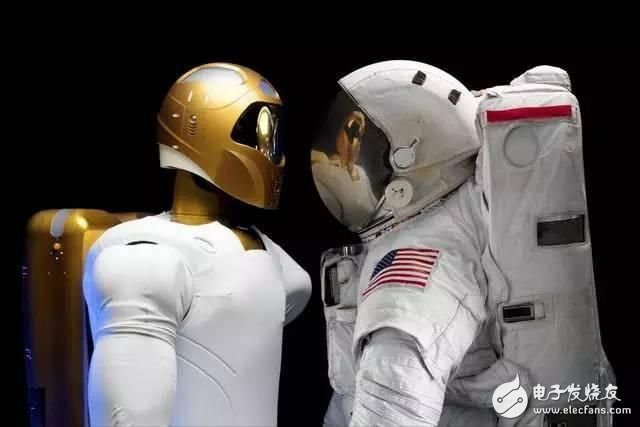
NASA develops a remote control space robot R2
Automatic robots can act autonomously without relying on any control personnel. The basic principle is to program the robot so that it can respond to external stimuli in some way. The extremely simple collision response robot can well explain this principle.
This robot has a collision sensor to check for obstacles. When you start the robot, it roughly follows a straight line. When it hits an obstacle, the impact force will act on its collision sensor. Each time a collision occurs, the robot's program will instruct it to retreat, turn right again, and then move on. According to this method, the robot will change its direction whenever it encounters an obstacle.
Advanced robots will use this principle in a more sophisticated way. Robot experts will develop new programs and sensing systems in order to create robots with higher intelligence and better perception. Today's robots can show their talents in various environments.
Simpler mobile robots use infrared or ultrasonic sensors to sense obstacles. These sensors work similarly to an animal's echolocation system: the robot emits a sound signal (or a beam of infrared light) and detects the signal's reflection. The robot will calculate the distance between it and the obstacle based on the time it takes for the signal to reflect.
Higher-level robots use stereo vision to observe the world around them. The two cameras can provide depth perception for the robot, while the image recognition software enables the robot to determine the position of the object and recognize various objects. Robots can also use microphones and odor sensors to analyze the surrounding environment.
Some automatic robots can only work in the limited environment they are familiar with. For example, mowing robots rely on landmarks buried underground to determine the range of the pasture. The robot used to clean the office needs a map of the building to move between different locations.
Higher-level robots can analyze and adapt to unfamiliar environments, and even adapt to rugged terrain. These robots can associate specific terrain patterns with specific actions. For example, a rover robot will use its visual sensors to generate a map of the ground ahead. If the map shows a rough terrain pattern, the robot will know that it should take another path. This system is very useful for exploratory robots working on other planets.
There is a set of alternative robot design schemes that use a looser structure and introduce randomization factors. When this kind of robot is stuck, it will move the appendages in all directions until its movement produces an effect. It accomplishes the task closely through the force sensor and the transmission device, instead of the computer guiding everything through the program. This is similar to when ants try to get around obstacles: ants do n’t seem to make a decisive stop when they need to pass an obstacle, but keep trying various methods until they get around the obstacle.
3. Home-made robotsIn the final parts of this article, we take a look at the most compelling areas in the robot world: artificial intelligence and research robots. Over the years, experts in these fields have made great progress in robot science, but they are not the only manufacturers of robots. For decades, despite the few people who loved it, they were passionate, and they have been making robots in garages and basements around the world.
Home-made robots are a rapidly developing subculture and have considerable influence on the Internet. Amateur robot enthusiasts use various commercial robot tools, mail-order parts, toys and even old-fashioned video recorders to assemble their own works.
Like professional robots, home-made robots are also diverse. Some robot enthusiasts who can't work until the weekend have made very delicate walking machines, while others have designed housekeeping robots for themselves, and some enthusiasts are keen to make competitive robots. Among the competitive robots, the most familiar is the remote control robot warrior, as you can see in the "BattleBots" program. These machines are not "real robots" because they do not have reprogrammable computer brains. They are just enhanced remote control cars.
More advanced competitive robots are controlled by computers. For example, football robots do not require human input at all when playing small football matches. The standard robot soccer team consists of several separate robots that communicate with a central computer. This computer "watches" the entire stadium through a camera, and distinguishes the football, goal, and players from each other based on color. The computer is always processing this kind of information and deciding how to direct its team.
Adaptability and versatility
The personal computer revolution is marked by its excellent adaptability. Standardized hardware and programming languages ​​allow computer engineers and amateur programmers to manufacture computers for their specific purposes. Computer parts are somewhat similar to craft supplies, and their uses are countless.
Most robots to date are more like kitchen appliances. Robot experts manufacture them specifically for specific uses. But their adaptability to completely different application scenarios is not very good.
This situation is changing. A company called EvoluTIon RoboTIcs pioneered the field of adaptive robot software and hardware. The company hopes to develop its niche market with an easy-to-use "robot developer toolkit."
This toolkit has an open software platform that provides a variety of commonly used robot functions. For example, robotics can easily give their work the ability to track targets, follow voice commands, and bypass obstacles. From a technical point of view, these functions are not revolutionary, but unusually, they are integrated in a simple software package.
This kit also comes with some common robot hardware, which can be easily combined with software. The standard kit provides some infrared sensors, motors, a microphone and a video camera. Robot experts can use a set of reinforced mounting components to assemble all of these components, this set of components includes some aluminum body parts and durable wheels.
Of course, this toolkit does not allow you to create mediocre works. It sells for more than $ 700, and it is by no means a cheap toy. However, it is a big step towards new robot science. In the not-too-distant future, if you want to build a new robot that can clean the room or take care of your pets when you leave, you may only need to write a BASIC program, which will save you a lot of money.
Fourth, artificial intelligenceArtificial intelligence (AI) is undoubtedly the most exciting field in robotics, and undoubtedly the most controversial: everyone believes that a robot can work on an assembly line, but there are differences on whether it can be intelligent.
Just like the term "robot" itself, it is also difficult for you to define "artificial intelligence". The ultimate artificial intelligence is the reproduction of the human thought process, that is, an artificial machine with human intelligence. Artificial intelligence includes the ability to learn any knowledge, reasoning ability, language ability and the ability to form your own opinions. At present, robot experts are still far from achieving this level of artificial intelligence, but they have made great progress in the limited field of artificial intelligence. Today, machines with artificial intelligence can already imitate certain specific intelligent elements.
Computers already have the ability to solve problems in a limited area. The implementation process of solving problems with artificial intelligence is complicated, but the basic principle is very simple. First, artificial intelligence robots or computers will collect facts about a situation through sensors (or manual input). The computer compares this information with the stored information to determine its meaning. The computer calculates various possible actions based on the collected information, and then predicts which action will work best. Of course, the computer can only solve the problems that its programs allow it to solve, and it does not have the analytical ability in the general sense. Chess computers are an example of such machines.
Some modern robots also have limited learning abilities. Learning robots can recognize whether a certain action (such as moving a leg in a certain way) achieves the desired result (such as bypassing an obstacle). The robot stores this kind of information, and when it encounters the same situation next time, it will try to make actions that can be successfully dealt with. Similarly, modern computers can only do this in very limited scenarios. They cannot collect all types of information like humans do. Some robots can learn by imitating human movements. In Japan, robot experts demonstrate the dance movements to a robot and let it learn to dance.
Some robots have interpersonal communication capabilities. Kismet is a robot made by the MIT Artificial Intelligence Laboratory. It can recognize human body language and tone of speech, and respond accordingly. The authors of Kismet are very interested in the interaction between adults and babies. The interaction between them can be completed only by tone of voice and visual information. This low-level interaction can be used as the basis for a humanoid learning system.
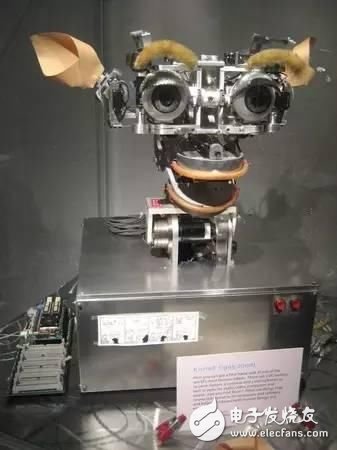
Kismet and other robots manufactured by the MIT Artificial Intelligence Laboratory use an unconventional control structure. These robots do not use a central computer to control all movements, and their low-level movements are controlled by low-level computers. Project Director Rodney Brooks believes that this is a more accurate model of human intelligence. Most human actions are made automatically, not by the highest level of consciousness.
The real problem with artificial intelligence lies in understanding how natural intelligence works. The development of artificial intelligence is different from the manufacture of artificial hearts. Scientists do not have a simple and specific model for reference. We know that the brain contains tens of billions of neurons, and our thinking and learning are accomplished by establishing electronic connections between different neurons. But we don't know how these connections achieve high-level reasoning capabilities, and we don't even know how to implement low-level operations. The neural network of the brain seems incomprehensible.
Therefore, artificial intelligence is largely a theory. Scientists make hypotheses about the principles of human learning and thinking, and then use robots to experiment with their ideas.
Just as the physical design of robots is a convenient tool for understanding animal and human anatomy, the study of artificial intelligence also helps to understand how natural intelligence works. For some robot experts, this insight is the ultimate goal of robot design. Others are imagining a world in which humans and intelligent machines live together. In this world, humans use various small robots for manual labor, health care, and communication. Many robot experts predict that the evolution of robots will eventually make us completely semi-robots, that is, human beings fused with machines. There is reason to believe that humans in the future will implant their thoughts in strong robots and live for thousands of years!
In any case, robots will play an important role in our future daily lives. In the next few decades, robots will gradually expand beyond industry and science into daily life, which is similar to the process of computers gradually spreading to homes in the 1980s.
Recommend a book to everyone!

Robotics: technological change and future prospects
Headphone speaker:
Headphone speaker is a king of speaker unit which is used for headphone, it also called headphone driver. These speakers have high sound pressure level, fast frequency response, wide frequency response range and low distortion. Headphone speakers are mainly used for voice headphone (e.g. customer service phone, call center headphone, military intercom headset- ) and music headphone (e.g. Bluetooth headphone, sport headphone, game headphone-).
Our main headphone speakers include:
1) From the diameter, we have speakers in 23mm ~ 57mm.
2) From the impedance, we have speakers of 32ohm/150ohm/300ohm/1000ohm.
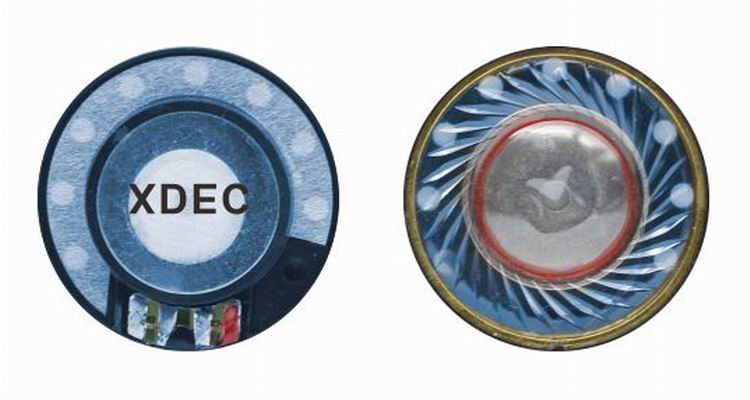
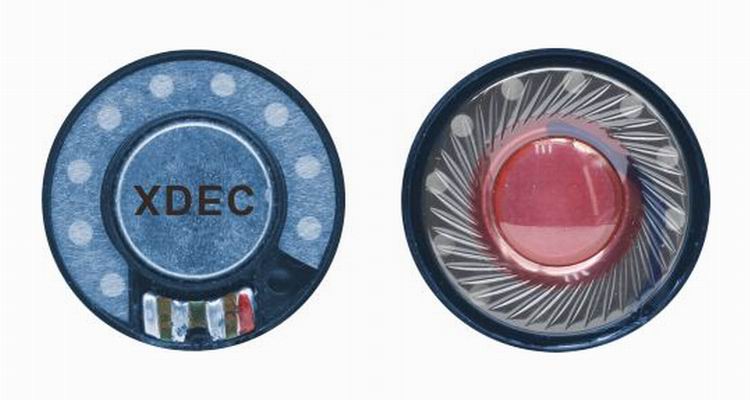
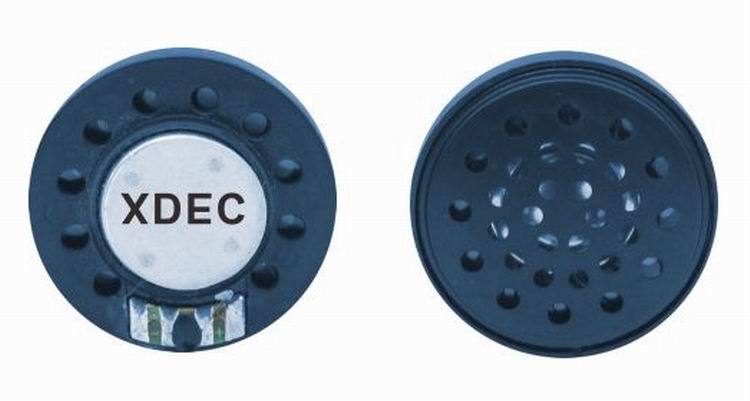
FAQ
Q1. What
is the MOQ?
XDEC: 2000pcs for one model.
Q2. What is the delivery lead time?
XDEC: 15 days for normal orders, 10 days for urgent orders.
Q3. What are the payment methods?
XDEC: T/T, PayPal, Western Union, Money Gram.
Q4. Can you offer samples for testing?
XDEC: Yes, we offer free samples.
Q5. How soon can you send samples?
XDEC: We can send samples in 3-5 days.
Headphone Speaker,Headset Speaker,Earphone Speaker,Headphone Parts Speaker
Shenzhen Xuanda Electronics Co., Ltd. , https://www.xdecspeaker.com